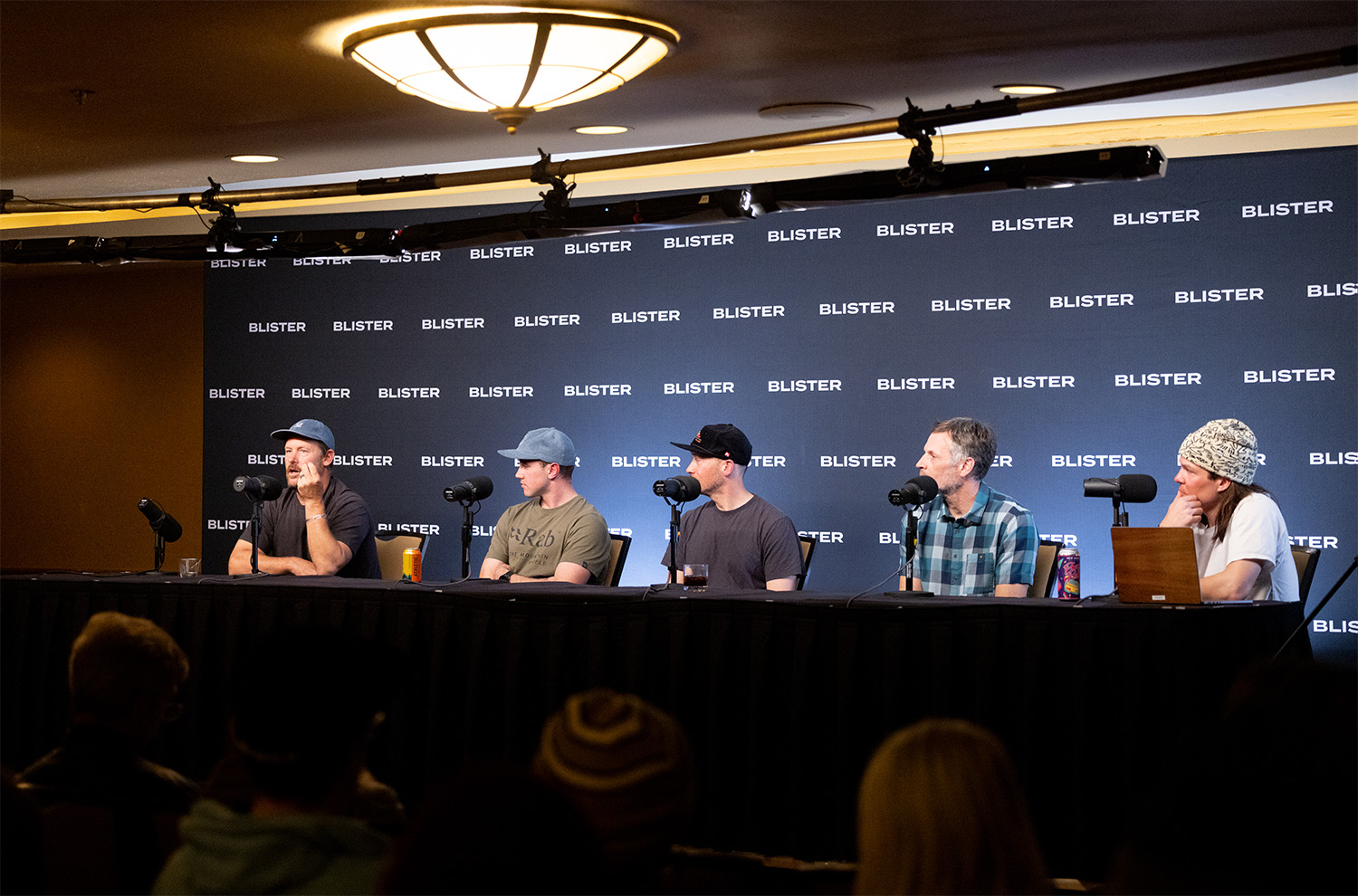
Leave a rating and / or review in the Apple Podcast app or on the Spotify app.
This free, 30-second action on your part lets us know you value all the time & energy that goes into producing & publishing GEAR:30, and it ensures that we can keep the show going.
How to Leave a Rating / Review on Apple Podcasts
- Open the Apple Podcast App
- (if you’re on your phone, simply click this link)
- Go to the icons at the bottom of the screen and choose “search”
- Search for “GEAR:30”
- Click on the SHOW — *not* the specific episode
- Scroll down to “Ratings and Reviews”
- Click on “Tap to Rate” and leave us a 5-Star Rating!
- Below that, you can click Write a Review if you’d like to share a few words
How to Leave a Rating on Spotify
- Currently, you can only rate a podcast in the Spotify mobile app
- (if you’re on your phone, simply click this link)
- Navigate to the GEAR:30 show on Spotify (not to a specific episode)
- Tap the star icon underneath the podcast description and if you like the show, leave a 5-star rating
- On Spotify, you need to listen to at least one episode before you can rate a podcast.
In this panel conversation from Blister Summit 2025, we discuss why all of your outdoor apparel recently changed — and how that will impact your own experiences.
Specifically, we’re talking about the ban on PFAS chemicals; why they’d been so extensively used in outdoor apparel (and far beyond); the real-world performance differences between them and new PFAS-free alternatives; and what you need to know to make the most of your own apparel.
To cover all of this, we brought together an excellent panel of industry professionals, including Eric Wallis (Patagonia), Dan Abrams (Flylow), Tom Mason (Ortovox), and Ross Herr (Rab).
RELATED LINKS:
Get Yourself Covered: BLISTER+
TOPICS & TIMES:
What Are PFAS? (3:31)
Why the Move Away from PFAS (8:09)
New vs. Old DWR & Waterproof Membranes (10:15)
New Discoveries (18:56)
Exciting Trends (25:35)
Audience Questions:
Down vs Synthetic (28:55)
Caring For PFAS-Free Layers (32:23)
3rd-Party Water Repellants (35:53)
Non-Porous Membranes (40:05)







It’s good you organized this; it was informative. The panelists explained the main downside of the non-PFAS/PFC DWR’s are that they’re not oleophobic, so they need to be kept relatively oil-free; but this can be addressed with regular washing.
Alas, I do have one critique: The panelists never mentioned what I’ve read is the main downside of non-PFAS membranes (i.e, the waterproof-breathable membranes that are at the heart of this): They aren’t yet as breathable as the best PFAS membranes.
For instance Gore’s most breathable PFAS membranes have RET<6, which is excellent. By contrast, according to Backpacker Magazine, Gore's non-PFAS ePE membrane has RET<13. A key competitor to Gore's ePE is eVent alpiniST; but they don't release its RET value, which is telling.
I'm disappointed the panelists didn't show more candor about this. Then again, they have an financial interest that limits how frankly they can speak. Going forward, I'd like to see you include a couple of folks with no fiancial COI's, but substantial technical expertise, on your panels when discussing such topics, such as university chemistry or chemical engineering faculty who have researched the properties of these materials.
I'm sure the breathability of non-PFAS membranes will improve with time; PFAS membranes are only as good as they are today because of years of incremental improvement. I expect the same will eventually happen with the new non-PFAS membranes; but that doesn't appear to be where they are today.
Thanks for the feedback, I appreciate it.
Regarding breathability data, hopefully we’ll learn more as more of these new PFAS-free membranes hit the market. The new ePE Gore-Tex Pro will be hitting shelves in a few months, and I’m curious to see what sort of data (if any) they publicly release about its breathability metrics. Same goes for eVent’s AlpineST. And I would absolutely love to talk to anyone who has performed 3rd-party testing (I haven’t come across any, but that’s not surprising to me, given the novelty of the PFAS-free membranes).
As for our actual reviews, we’ll keep using these products for the activities they’re designed for and report our findings. So far, we’ve used several ePE standard Gore-Tex shells and one of the new ePE Gore Pro shells. During this relatively limited time frame, I can’t say I’ve noticed any significant differences in breathability or water resistance.
However, the important context there is that I rarely find myself noticing significant breathability differences in the real world when it comes to waterproof membranes of any kind. The exceptions, in our experience, have been certain air-permeable fabrics, such as Schoeller Aerobrane and the lightest iterations of Polartec NeoShell. I have felt that some lightweight Gore Active shells breathed slightly better than comparable standard Gore-Tex and Pro pieces, but that difference has been much smaller vs. the most breathable air-permeable shells we’ve tested (and some “air-permeable” fabrics still don’t breathe much better than non-air-perm fabrics).
I.e., our (very general) take has been that most “waterproof” membranes don’t breathe well, and most of the differences between membranes are so minor that most folks won’t notice them (especially if they’re using them in a warmer and/or more humid climate). So far, that’s held true with our initial testing of ePTFE vs. ePE Gore-Tex fabrics.
Based on our past experiences, I’m more interested in how and when companies will create PFAS-free membranes that offer a useful degree of air permeability, rather than transferring moisture vapor slightly faster. If some company claims a dramatically higher MVTR or dramatically lower RET value, I’ll be extremely eager to test it, but my take is that those numbers don’t often closely correlate with my experience using these fabrics / outerwear.
I hope to publish an update on this topic later this year, but in the meantime, this article is still worth a look for a deeper dive into the mechanisms that go into ‘breathability’ and why most membranes are so limited when it comes to real-world use: https://blisterreview.com/recommended/outerwear-201-marketing-wars-new-technologies-paradigm-shifts/2
Thanks Luke, really appreciate your informative and thoughtful reply, as well as the link to the older article. I thought Outerwear Nerd’s comment was interesting. Maybe you should invite him to your next panel on this!
You raise a good point: If the practical difference in breathability between the most and least breathable microporous membranes isn’t significant, then it doesn’t matter if the new PU microporous membranes fall on the less breathable side of the spectrum. I haven’t done the comparison myself.
And I agree that these membranes aren’t generally highly breathable, which is why I never buy a waterproof-breathable jacket unless it comes with pit zips (the one exception is my Phenix jacket with detachable sleeves).
Another point that wasn’t addressed is seam taping. This is a key failure point for waterproof-breathables, so I’d be interested to hear how the robustness of taped seams on non-PFAS and PFAS membranes compares.
Yeah, I’ll be curious to see if we notice any differences with the seam tape. I haven’t heard anything about if / how that’s changed with the PFAS ban. I know most of the 3L shells we test use seam tape made of the same material as the rest of the piece, so I wouldn’t expect a big difference there, but many 2.5L and 2L shells use more basic mono-material tapes and I wouldn’t be surprised if some of them contained PFAS. I’ll see if I can get any insight about whether brands have also had to use different tapes and/or different adhesion methods, and will keep tabs on our test pieces to see if we experience any premature delamination.